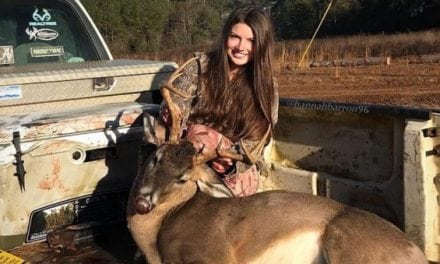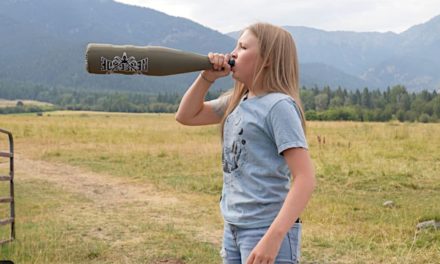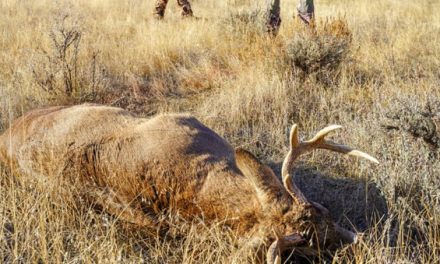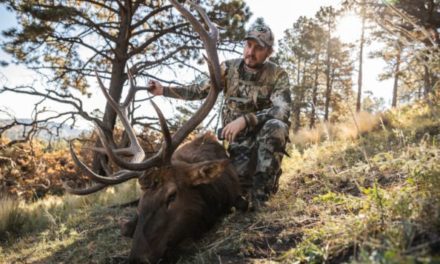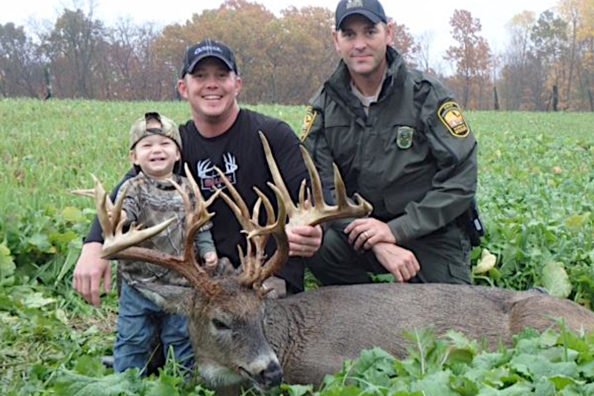
Why do we now assume every big buck is poached or unnatural?
In this day and age everything falls under and draws internet scrutiny. Double that when it comes to deer hunting and big whitetail bucks.
Over the years, I’ve written stories on some of the widest racks ever seen on whitetails, whether they were the narrowest or featured the craziest drop tines.
But I’ve also noticed a disheartening trend of fellow hunters who disbelieve these bucks at the very sight of them. So today, I have to rant about the immediate assumption that every big buck is a high-fence or poached deer.
The beef with high fences and poaching is real.
Look, I get it. I’ve written extensively in the past about why I don’t agree with any sort of high-fence deer hunting operation. So I’m not going to go into huge detail on that here. But I especially take issue with the ones that selectively use genetic modification and selective breeding to make artificial trophy deer. What’s worse is most of these operations then have customers select the deer they want off a chart before taking them out to shoot their selected animal over a pile of corn.
These canned hunts and poaching are both bad for hunting in general. So please don’t think I am defending high-fence deer hunting or crime in any way with this story.
However, I am worried these canned hunts and crimes are making us distrust one another in a new kind of way.
“It’s a farm deer!”
Years ago, I wrote was about 100-percent wild, known world-record-sized bucks that never met up with a hunter’s bullet or arrow. On that list, I included the famous “Missouri Monarch,” the buck currently holding the top spot in Boone and Crockett’s record books.
I also featured the “Minnesota Monarch,” which currently holds the record for the largest set of sheds off a wild whitetail ever.
Both of these animals were documented to be 100-percent wild and 100-percent free-ranging, as confirmed by multiple witnesses. No genetic manipulation or high fences here. In the case of the Missouri Monarch, it was even confirmed by the Missouri Department of Conservation only hours after the buck’s body being found dead outside St. Louis in 1981.
Yet, when my editors shared this story on Facebook, some hunters commented with disparaging remarks like, “No one would pay the $50,000 to shoot him,” or “Died waiting for someone to buy him.”
This wasn’t an isolated incident. I’ve swritten several pieces profiling big bucks that have received similar comments. In another story, I wrote of some of the biggest wild whitetails ever caught on trail camera. Included in this story was a photo of Stephen Tucker’s 312-inch Tennessee whitetail that turned out to be the largest fair-chase whitetail ever. Tucker’s buck was confirmed to be wild by multiple witnesses and hunters on neighboring properties that were also pursuing the beast of the deer herd.
Yet, this story also got disparaging remarks about the bucks in the story being “impossible,” or “genetically modified.”
The whole thing got me wondering.
How did we get here?
It was sometime in the mid-1970s when deer breeders first started selectively breeding whitetails to produce more desirable traits like crazy non-typical racks and drop tines. It wasn’t long after that someone realized there was big money to be made from breeding big bucks, as well as selling them to people to shoot on hunting ranches.
As time has gone on, things have gotten more and more extreme. Some breeders pump the bucks full of hormones and feed specifically made to produce bigger and bigger antlers. In some cases, there were whitetail deer with an uncomfortable-to-look-at 400-500 inches worth of antler. The breeders then turn around and sell these animals for hundreds of thousands of dollars either to other breeders or high-fence operations to sell on “trophy whitetail hunts” behind 13-foot-high fences.
Because this was going on, at some point many hunters seem to have slipped into a mentality that truly massive whitetails are simply impossible to come by. It seems to be more of a problem for non-typical deer than typical deer. Many hunters simply won’t believe a whitetail deer can produce 250-300 inches of antler in the wild, even with quality deer management.
And for some reason, if they don’t immediately fall under “high-fence” suspicion, hunter assume someone must’ve shot them illegally. I’m not quite sure where this second accusation comes from. Maybe it comes from more poaching cases making high-profile headlines. Maybe it’s from personal frustrations people have experienced as a result of wildlife crime. Whatever the reason, often times these accusations are unfounded.
A deer scoring 250-300 inches is possible in the wild, but exceedingly rare.
Nature is an amazing thing. It has already done what man tries to do with selective breeding. I like to use the Texas State Record non-typical as an example here. This buck was shot in the late 1890s! Yet, it produced an unbelievable 280-plus inches of antler almost 80 years before hunters began breeding deer.
How about the famous “Hole-in-the-Horn” buck? This 328-2/8-inch monster didn’t come from a hunting preserve. It lived a 100-percent wild existence in Portage County, Ohio, before someone found it dead in 1940. The list of monster whitetails that came before high-fence hunting is endless.
Many hunters seem to be under the mentality of “seeing is believing.” But the odds of shooting a buck anything like the ones I just listed above while fair-chase hunting is probably akin to winning the Powerball. They’re so astronomical, most of us will never have that chance.
Add in the frustrations many experience from poaching, hunting pressure and reduced deer densities in some areas, and it’s little wonder some hunters start doubting.
Why does this matter?
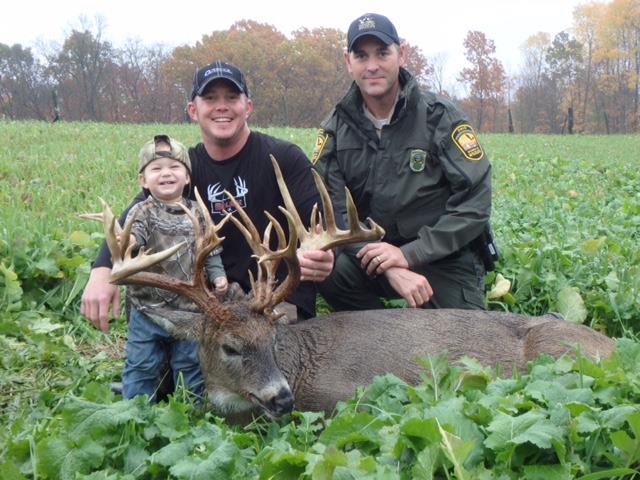
In the summer of 2015, Ohio hunter Dan Coffman was getting multiple trail camera photos of an unbelievable non-typical whitetail buck in his hunting area. Knowing the scrutiny and doubt that comes with the possible harvest of a buck like this, he notified a local DNR officer of the animal months in advance.
When Coffman did harvest the buck, he called the officer out to the scene to inspect everything from the spot where he took the shot to the spot where the buck fell dead. He also had the officer pose for photos with him and his monster whitetail.
All of this was a brilliant move on his part. The internet speculation was at a minimum and Coffman’s buck became one of the highest-scoring Ohio whitetails ever at 288 inches.
However, it makes me mad that it has actually come to this. The man had to bring along law enforcement just to prove his buck of a lifetime wasn’t a product of poaching or high fences. Why do we not trust our fellow hunters anymore? Why is the internet mob so quick to disparage and discredit every super-large whitetail before the facts are even out?
Sadly, it seems the jealousy of some hunters is now so bad, every hunter who’s lucky enough to take a big buck is now guilty until proven innocent. Can we not be happy for the lucky man, woman or child who’s fortunate enough to take the deer of a lifetime without accusing them of cheating?
Put yourself in their shoes. If you were lucky enough to legally harvest a 300-inch wild whitetail, would you appreciate someone accusing you of paying to shoot it in a pen or poaching it? Spreading these rumors not only disrespects the deer, it disrespects the hunter who took it.
In the past, I’ve written about how the last thing the hunting community needs is more division and strife in our ranks. Hunter numbers are falling everywhere and it’s no wonder few want to join the tradition. When they see how petty and jealous some can get over just one animal, it surely doesn’t look all that glamorous.
That’s why I have a proposal for all our Wide Open Spaces readers this season. As the big bucks start to fall across the country this fall, refrain from fanning the internet flames. Hold off on the speculation and rumors about big bucks coming from poaching or high fences. Please wait until the facts are in. Let’s make the hunting community, both online and in person, a better place starting today.
For more outdoor content from Travis Smola, be sure to follow him on Twitter and check out his Geocaching and Outdoors with Travis YouTube channels.
NEXT: THE AXIS DEER AND HOW THEY’RE IMPACTING PARTS OF THE UNITED STATES
WATCH
The post No, Not Every Big Buck is Poached or a "High-Fence" Deer appeared first on Wide Open Spaces.












